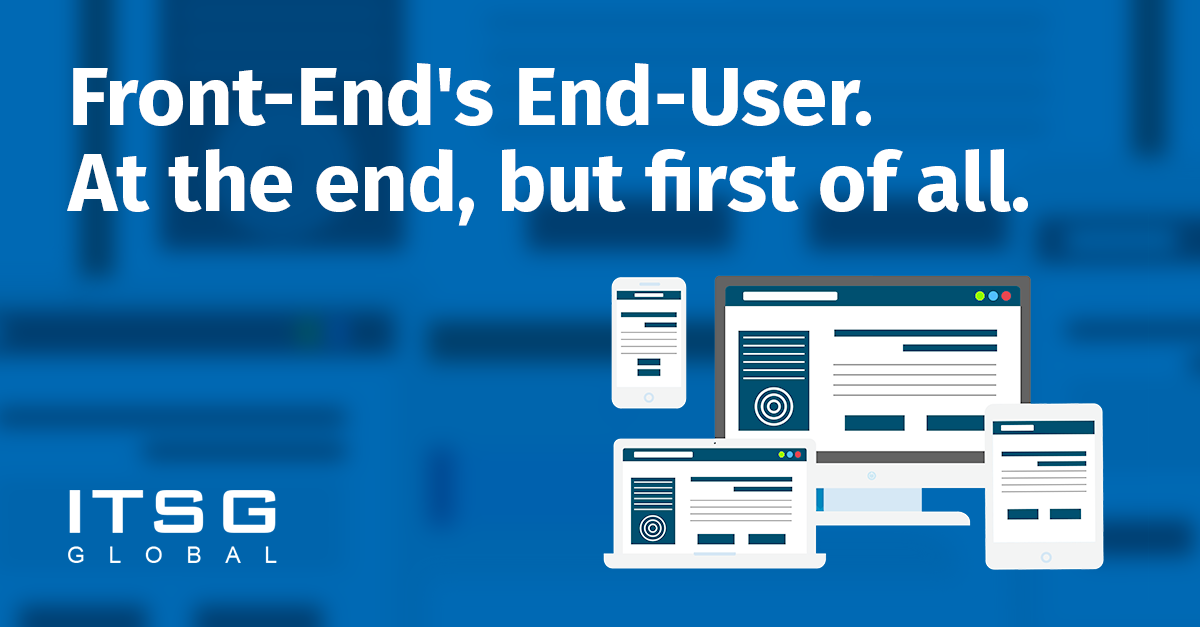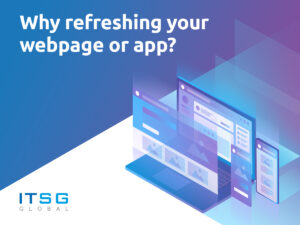23 July 2021

You know the strengths and limitations of the front-end designed for your website, CRM, extranet, or whatever you maintain. You know or feel what should be improved. But there is something that is not possible to be better than it exists. This is your front-end’s end-user. Let’s have a look at them for a while. Let’s be in touch with them and ask them as often as possible.
Front-end of front-ends
Probably clarity, suggested fonts and colors, user-friendly buttons, transparent menu, etc. are the first characteristics that come to your mind. Well, you are right, but only partly. OK, your front-end should meet your business’ needs. But it’s not just a beautifully designed Internet space. It’s a point of contact between your business and an end-user. So, you should give it a proper treatment. What does that involve?
Ask, ask and once again ask
Careful listening is a crucial business activity, and that means listening to your end-users. Why? People often design and implement nice stuff: faster software, better mobile app, a more intuitive interface, and so on. But if the work is based on presumed end-users’ needs, not the real ones defined by direct answers to direct questions, it is a waste of time, money, and energy resulting in mismatching output. It’s our audience that is the best and the only source of knowledge on development directions.
So, if you design the front-end for your target end-users — talk to them. Be curious and ask about every detail that seems unusual. Grab the insights. Create personas and define the problem to solve. And when some ideas for solutions are generated, it’s time for…
PTI
The three letters are the three steps for effective UX being developed by both sides of the project — you and your end-users.
- P for prototyping. It’s crucial to turn our UX ideas generated during our interviews with end-users into real clickable proposals. You can do your front-end visualization. What tools do you use? We have chosen Figma — easy-to-use web-based design tool. Its main advantages are: real-time collaboration and including a lot of useful features from other solutions in one place. For instance you can build a clickable prototype, get back to the previous version or see how others have seen the screen and follow their cursor.Then submit it to the end-users for…
- T for Testing. Give them access to your prototypes and say what to do, but don’t tell them how. Watch how they cope with your prototypes — apply analytical tools such as Google Analytics, Hotjar, etc. Check if your model provides an answer to the end-users’ problem. Then collect the feedback. By asking what works and what is to be improved, you can…
- I for Iterate. Get back to your prototype and make it better based on end-users’ information during the testing phase. After that, show them the corrected model, ask for more testing, and… collect more feedback.
Of course — iteration circle shouldn’t be a neverending story. You will know when your prototype is good enough to implement. Don’t worry. Of course, when you finish coding and release your final product, some new weaknesses will emerge. But your end-users will know that you have designed it keeping their needs in mind. And if you take care of your customers, you take care of your business as well.
If we work with the end-user from the beginning of the project to the end, you can be sure you have their needs on your mind. End-users are the source and the core of your business. Therefore asking them, prototyping for them, giving them your proposals for testing and developing with their feedback is a right way to build a successful front-end. Front-end for the end-user.
Author: Cezary Dmowski, CTO, Co-owner at ITSG Global






